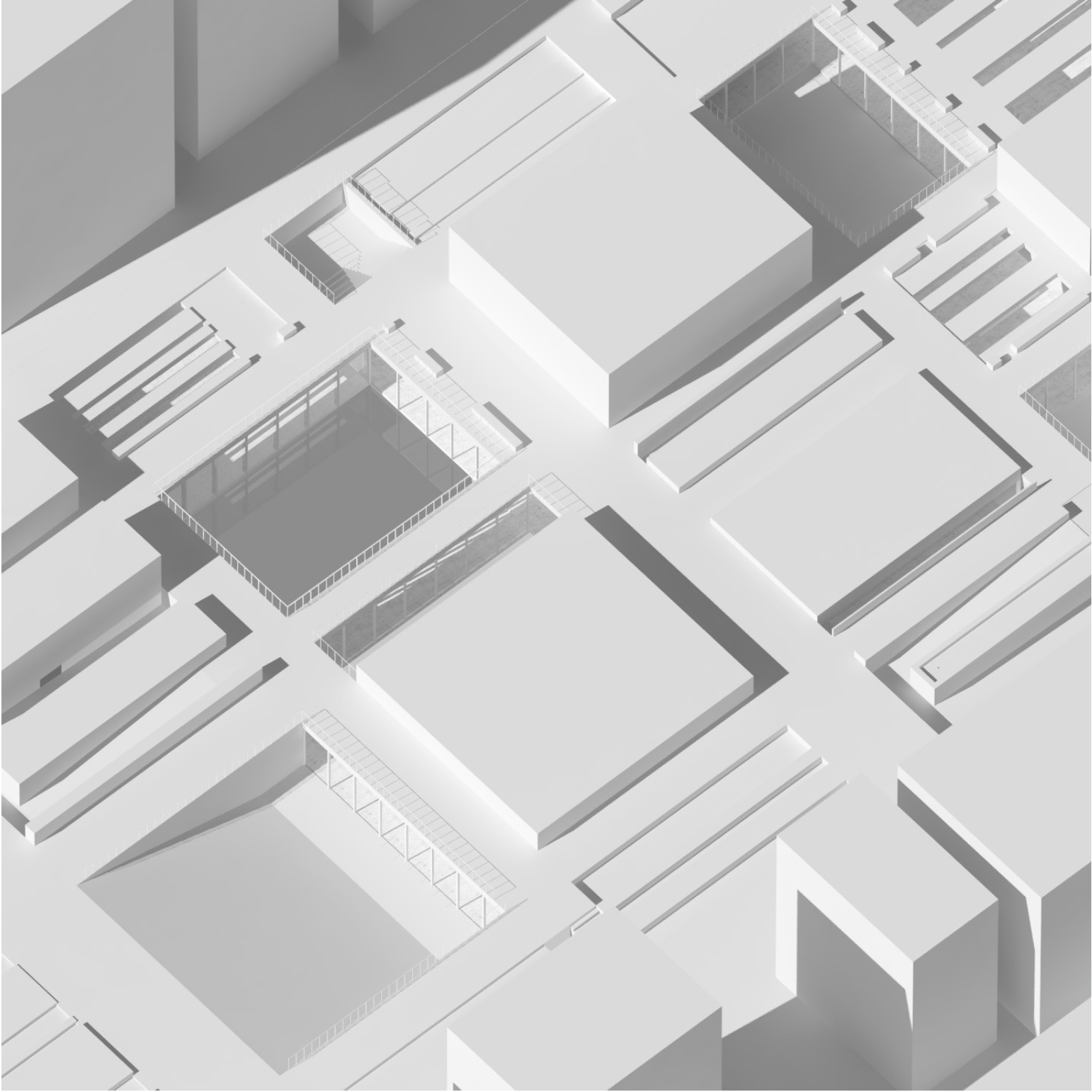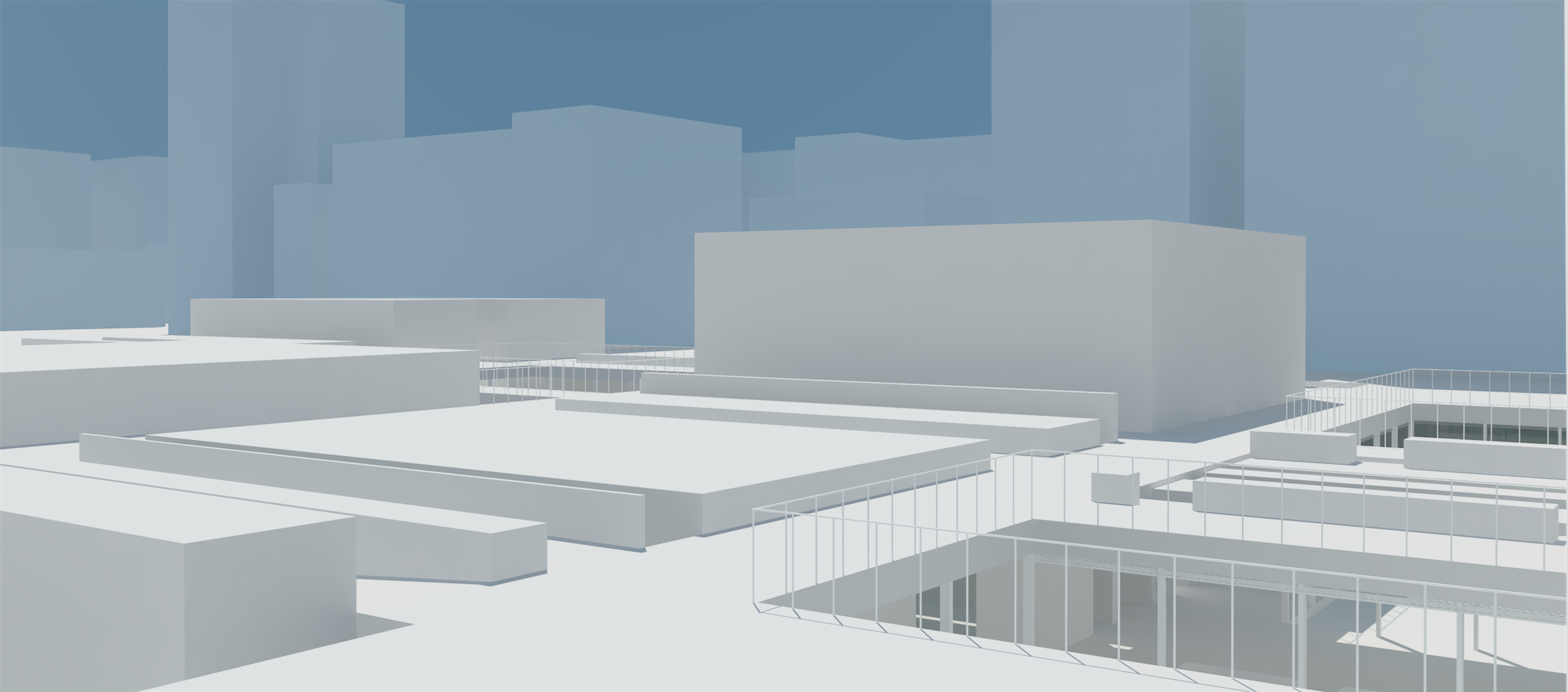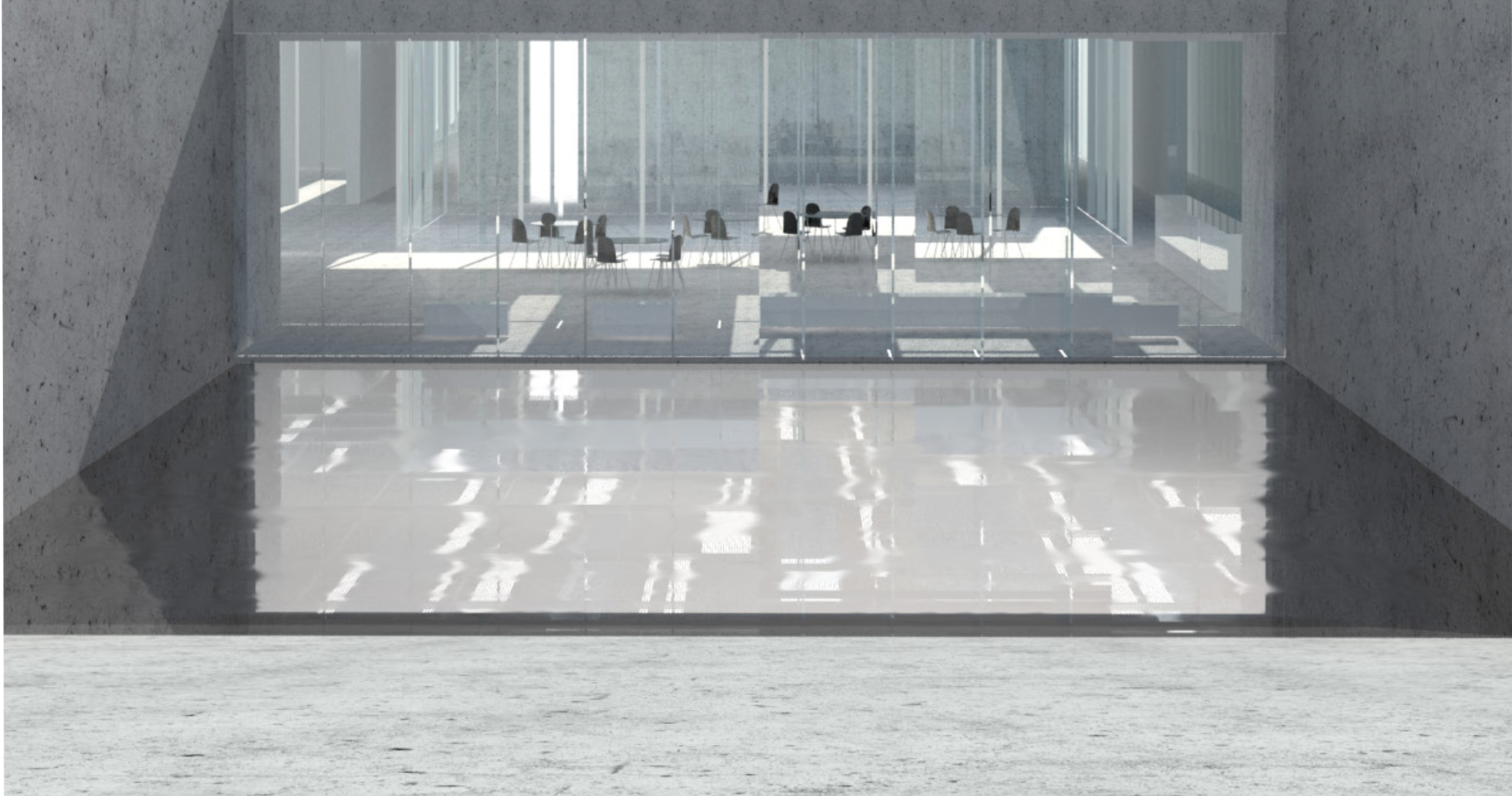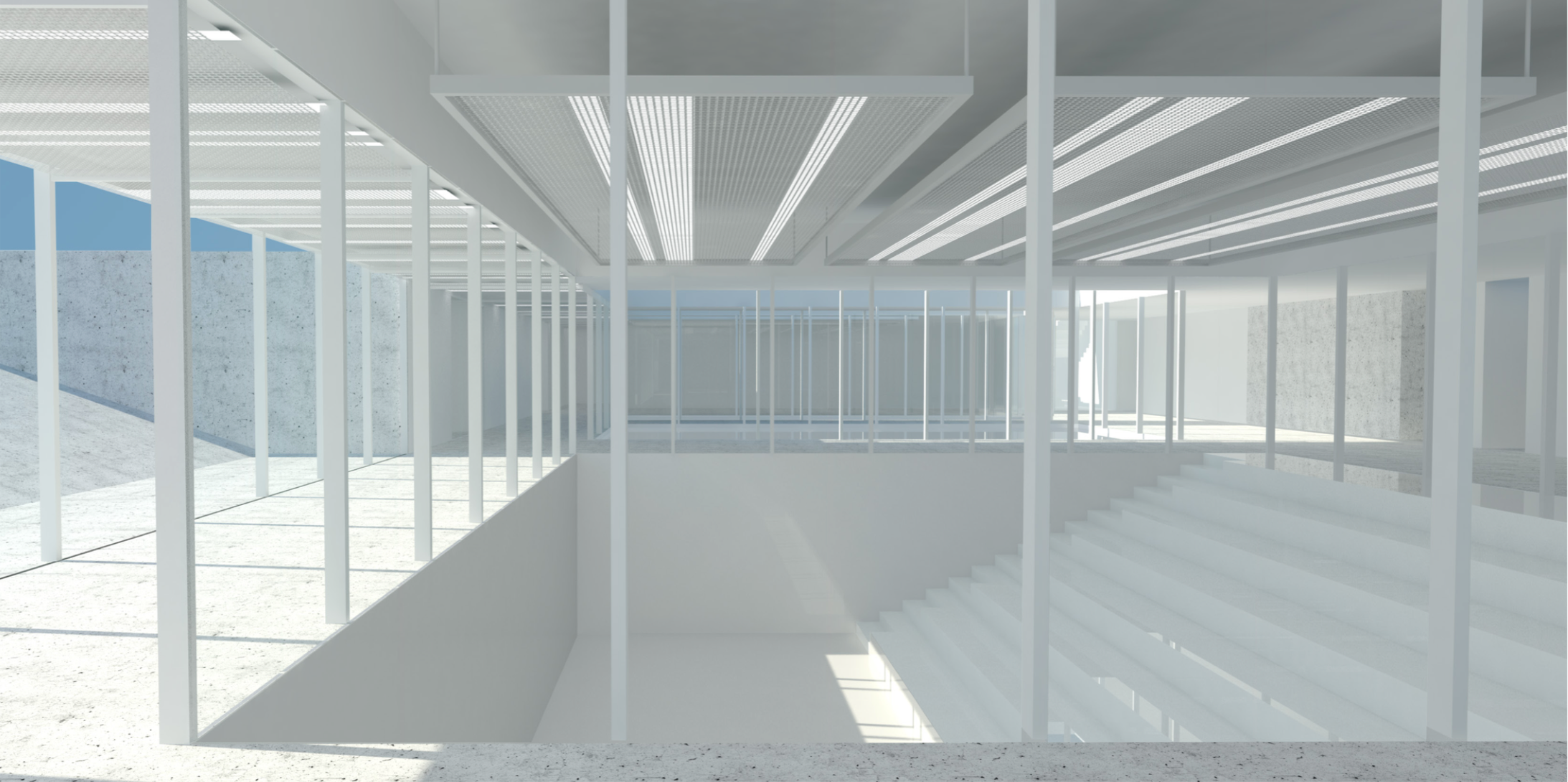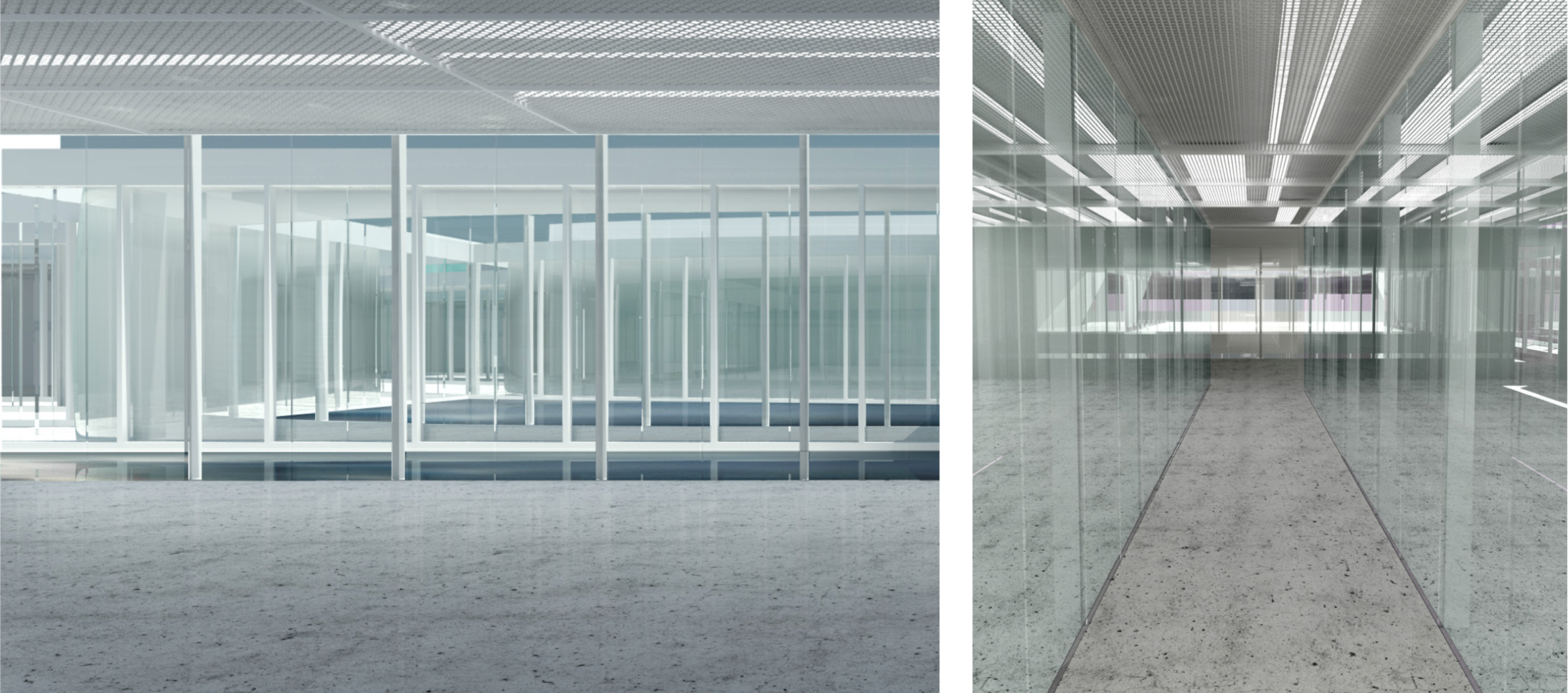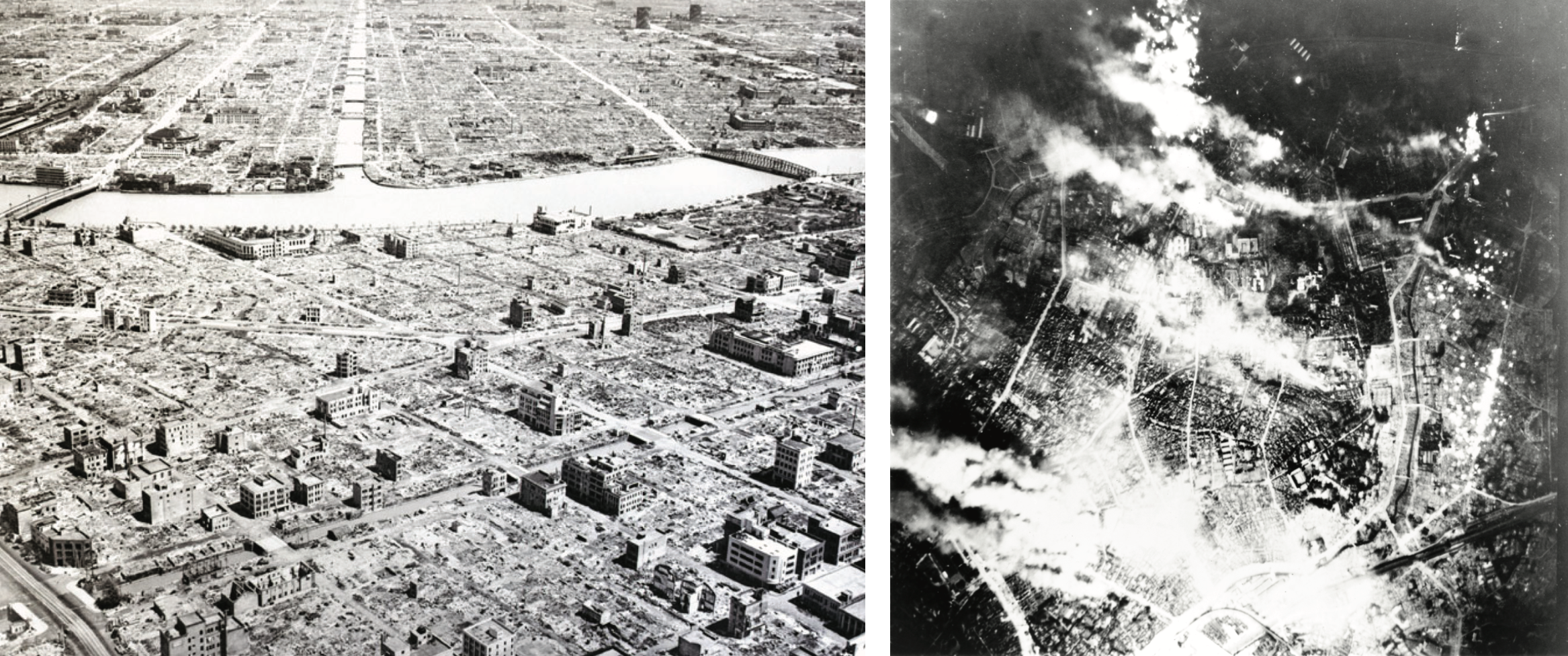
The Tokyo Firebombings Memorial
—
Tokyo’s ever shifting spatial and cultural dynamics leaves the city’s historical architecture scarce. A big contributor to that fact is the Tokyo fire bombings in the second world war where American raids would destroy roughly half of central Tokyo. The void that was left behind, A gap in the timeline of Tokyo’s development, gives the premise of the project. A memorial landscape anchored in time by the event it represents, fused with the plastic nature of an art museum changing with the constant cultural shifts in Tokyo. The project elaborates on the different interpretations of the void by applying spacial and contextual applications to each of the different terms used in japanese culture. These are the words: Wabi-sabi, the aesthetics of transience and imperfection. Mu (the void), Ma (in-between space, emptiness), Oku (inwardness) and Harappa (open field). The project sets out to frame an urban void as a site. The building itself is integrated into a void. A 2 km. long 50 m. wide park that cuts through building blocks stretching through space, over intervals of streets and under bridges. A 2 km long garden that ends in a river continuing out of sight. A certain feeling of transparency reminiscent of the aftermath of the fire bombings gives the park the void like properties that is needed for the building to anchor itself.
2016
If the memorial is an anchor in time then the program should counteract the monumentality of the memorial by having a program that represent the constant shift and growth of the art and culture scene in Tokyo. Hence the program is a hybrid between a memorial and an art museum. The dialogue between the static monumentality of a memorial and the ever shifting relevance of the arts should create a new dynamic in the Urban web of Tokyo. This is done with Programmed spaces where the void is of utmost importance. Above ground I try to minimise the functional - or render them invisible. A structural landscape drawing its spatial and morphological context from the event itself and the surrounding urban environment. The art museum lies underground where the void is seen as hyper neutral spaces that can be filled with unspecified things, the white cubes of the art museum and courtyards that translate into sculpture gardens as well as light sources. The act of removing material or excavating seems in coherence with the absence of the burned city and its memory. So the Structural properties only render themselves visible through subtle shifts and intervals above ground, seen as a structural landscape where as the functionality of the program lies below ground.



